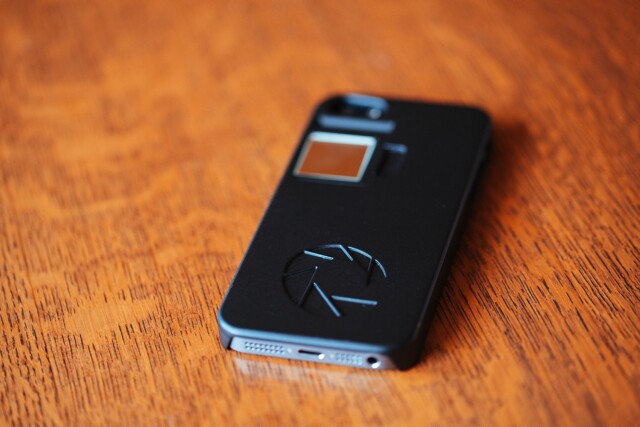Ah yes, it's a problem for the ages. You want to be in a photo taken with your own unmanned smartphone, but you have no way of propping the phone up, or seeing what the shot looks like. Well, the CaseCam is designed to help. It allows a phone laid down on a flat surface to see what's in front of it, plus the accompanying app lets you see what it's seeing.
The CaseCam is for the most part a standard polycarbonate protective iPhone case, with one exception – it has an integrated mirror. That mirror folds flat into the case when not in use, but flips up to sit diagonally below the camera lens when it's picture-taking time. When the phone is subsequently laid camera-side down, that mirror both lets the camera see what's in front of the phone, plus it angles it up kind of like a tripod.
Since the camera is looking at reversed images, the app inverts them to make them "right" again. The app also has an adjustable timer feature, plus it can be accessed via Wi-Fi by another iOS device. This means that if you're posing for a pic with with an iPhone-packin' friend, you can set your CaseCam-clad phone up to take the shot, then use their phone to check that you're both framed up properly, and to remotely trigger your phone to record the photo.

Although the mirror is reportedly made of non-image-distorting optical-quality glass, unfortunately that glass is left exposed even when the mirror is folded down (see picture above). As a result, it's quite likely to get scratched over time. Plans call for replacement mirrors to be available for US$7, although it's hard to say how many users would actually bother getting them.
Additionally, it would be nice if there were a way of incrementally raising the non-mirror end of the case, to adjust the camera's tilt angle. To some extent, of course, that could be done just by shoving a folded-up piece of paper or something under there.
The creators of the CaseCam are currently raising production funds for the device, on Kickstarter. A pledge of $25 will get you one, when and if they're ready to go. The planned retail price is $40. Although the first model will fit iPhones 5c and 5s, versions for other makes of phones are reportedly in the works.
The MirrorCase and the HiLO lens offer similar functionality, by the way, although neither of those have the same fold-flat form factor as the CaseCam.
More information is available in the pitch video below.
Sources: CaseCam, Kickstarter










